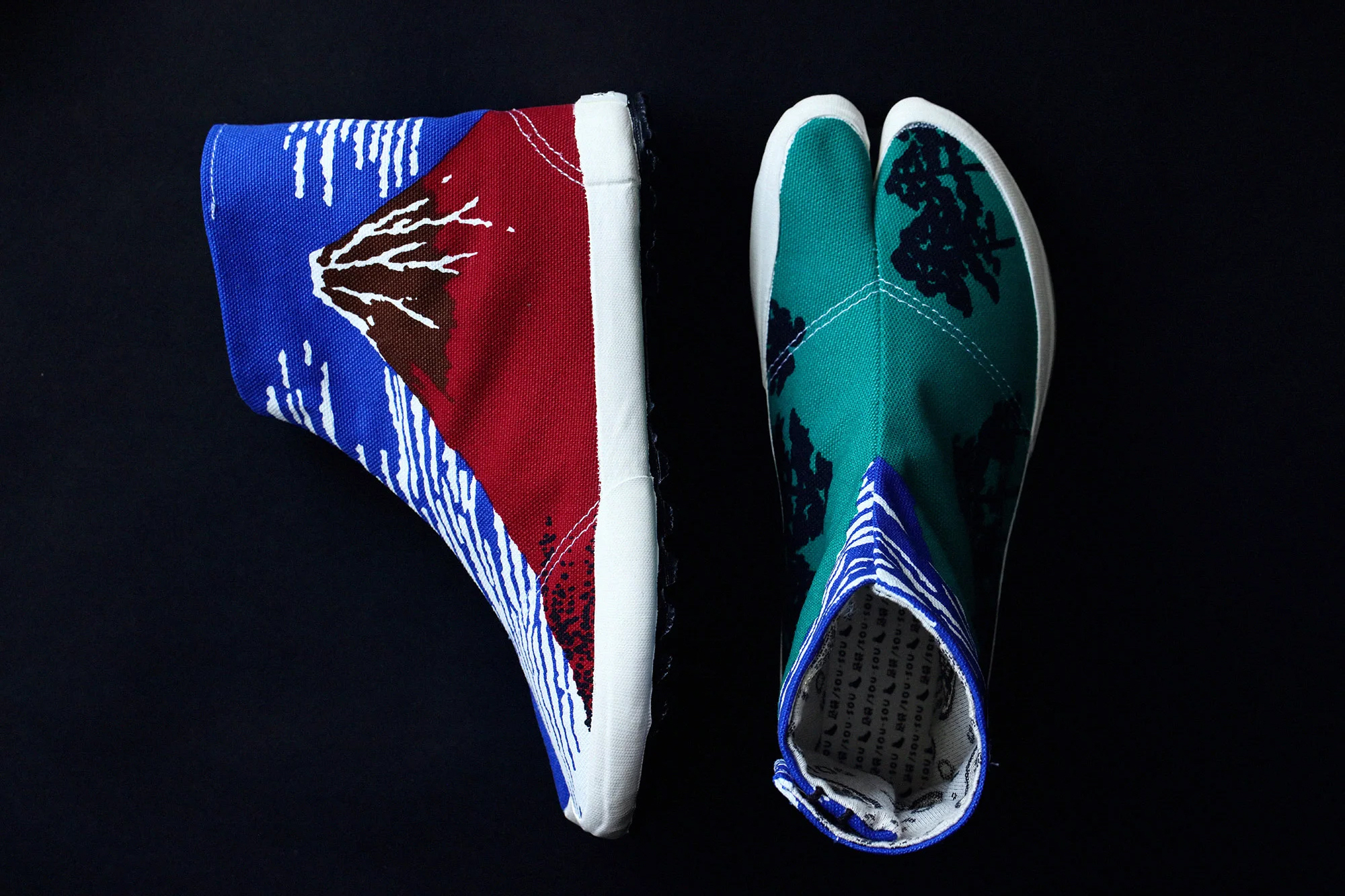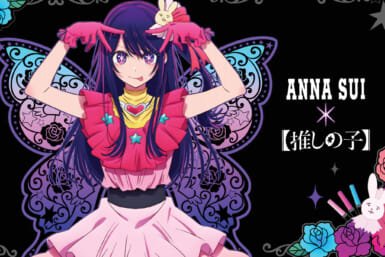2023 was the year of the tabi shoe. Specifically the Maison Margiela Tabi. Celebrities including Dua Lipa, Nick Jonas, Cardi B, Chlöe Sevigny and Pedro Pascal all sported the hoof-like split-toe footwear this year. But perhaps the most powerful marketing tool for the shoe was a viral TikTok in September, when a woman shared on the platform that her Tinder date, dubbed “the Tabi Swiper,” had stolen her pair worth around ¥150,000. It was viewed more than 178 million times and prompted a staggering 342% increase in Google searches for the shoes. According to Lyst Index, a quarterly ranking of fashion’s hottest brands and products, that was enough to shunt Maison Margiela Tabi Mary Janes to the number one spot for hottest products in Q3.
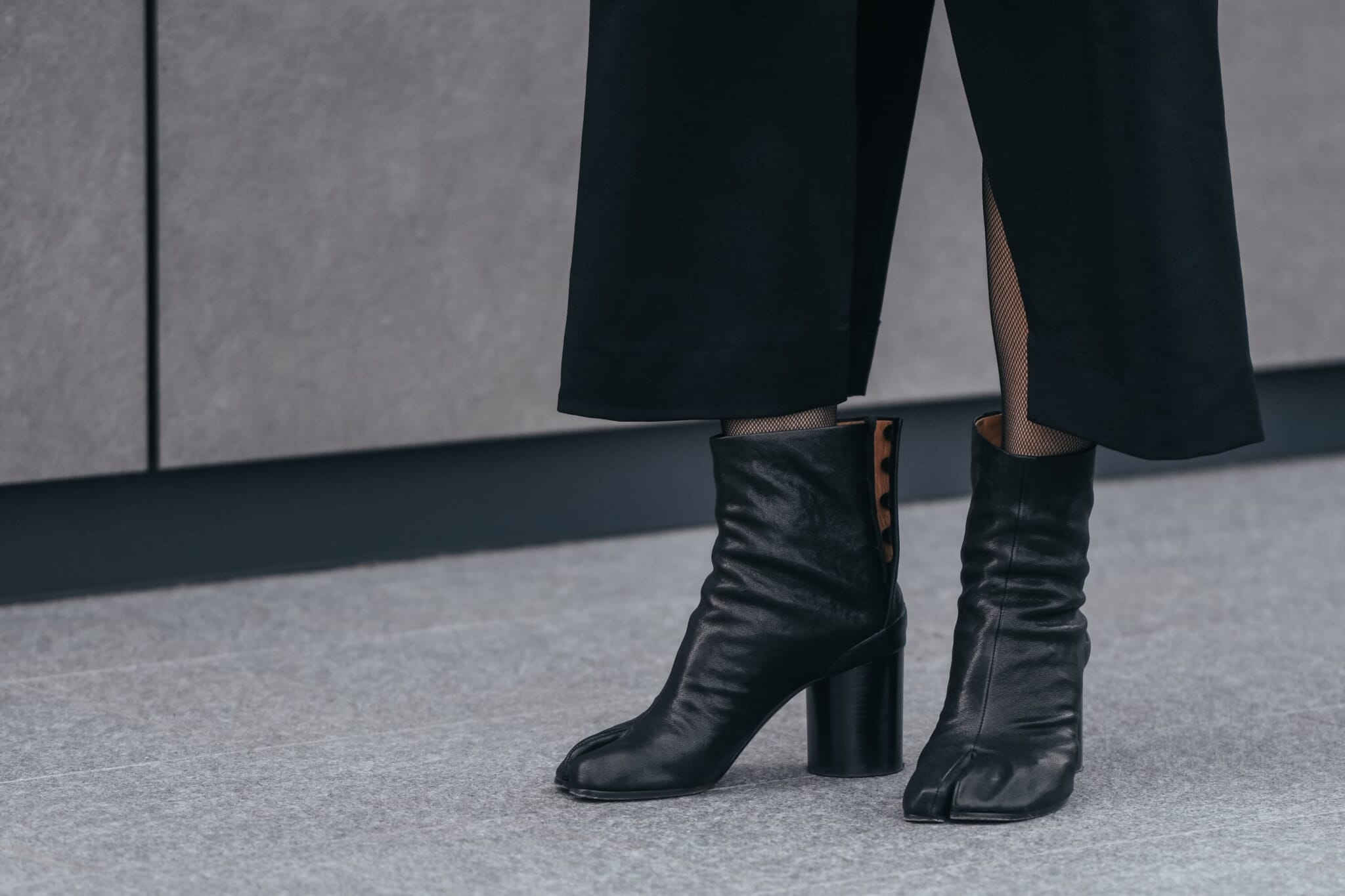
Margiela Tabi. Photo by Creative Lab via Shutterstock.
The Tabi Shoe’s Rise to Fame
Despite the hype this year, tabi are nothing new. Maison Margiela first introduced them to the fashion world in 1988 for its debut fashion show in Paris, during which the models left distinctive footprints in red paint across the runway. This ploy ensured that nobody could fail to notice the unusual footwear silhouette being ushered in. Maison Margiela’s founder, Belgian designer Martin Margiela, had formed the brand after leaving the boundary-pushing Jean Paul Gaultier fashion house and tabi were his deliberately bold attempt at creating some buzz for the new label.
Inspiration had struck him during a trip to Japan. Margiela was greatly inspired by the anti-fashion ingenuity of Comme des Garçons’ Rei Kawakubo and her contemporary Yohji Yamamoto, and when he saw the unconventional design of construction workers’ footwear, the Margiela Tabi was born. Since then, the shoe has been in continual production and has become synonymous with the brand. The Margiela Tabi is, quite literally, a divisive but enduring favorite among eccentric and avant-garde fashionistas.
A Brief History of the Japanese Tabi
Tabi, of course, date back far further than the late 80s. In Japan, tabi typically refers to the split-toe sock. This distinctive two-toe design first developed in the Heian period (794 to 1185) when they were worn with thonged zori and geta shoes.
Over time, the style evolved and tabi were constructed with reinforced leather, straw or cotton soles to make them practical for outdoor use. The rubber soles we typically see on Japanese-made tabi shoes (known as jika-tabi) today are a relatively new development, dating back just over 100 years ago to 1922. A young entrepreneur, Shojiro Ishibashi, created the rubber-soled version and used the money he made from his design to found Bridgestone, the tire manufacturer.
Of course, though a split toe is a huge fashion statement on red carpets in 2023, the design has its origins in practicality. The split toe made these tough and sturdy boots more flexible for manual laborers, allowing farmers, construction workers and even those taking part in matsuri, to move more naturally. Today, you’ll still find some construction workers in Japan wearing jika-tabi, though these days they will have steel toecaps that meet the safety standards of more modern construction footwear designs.
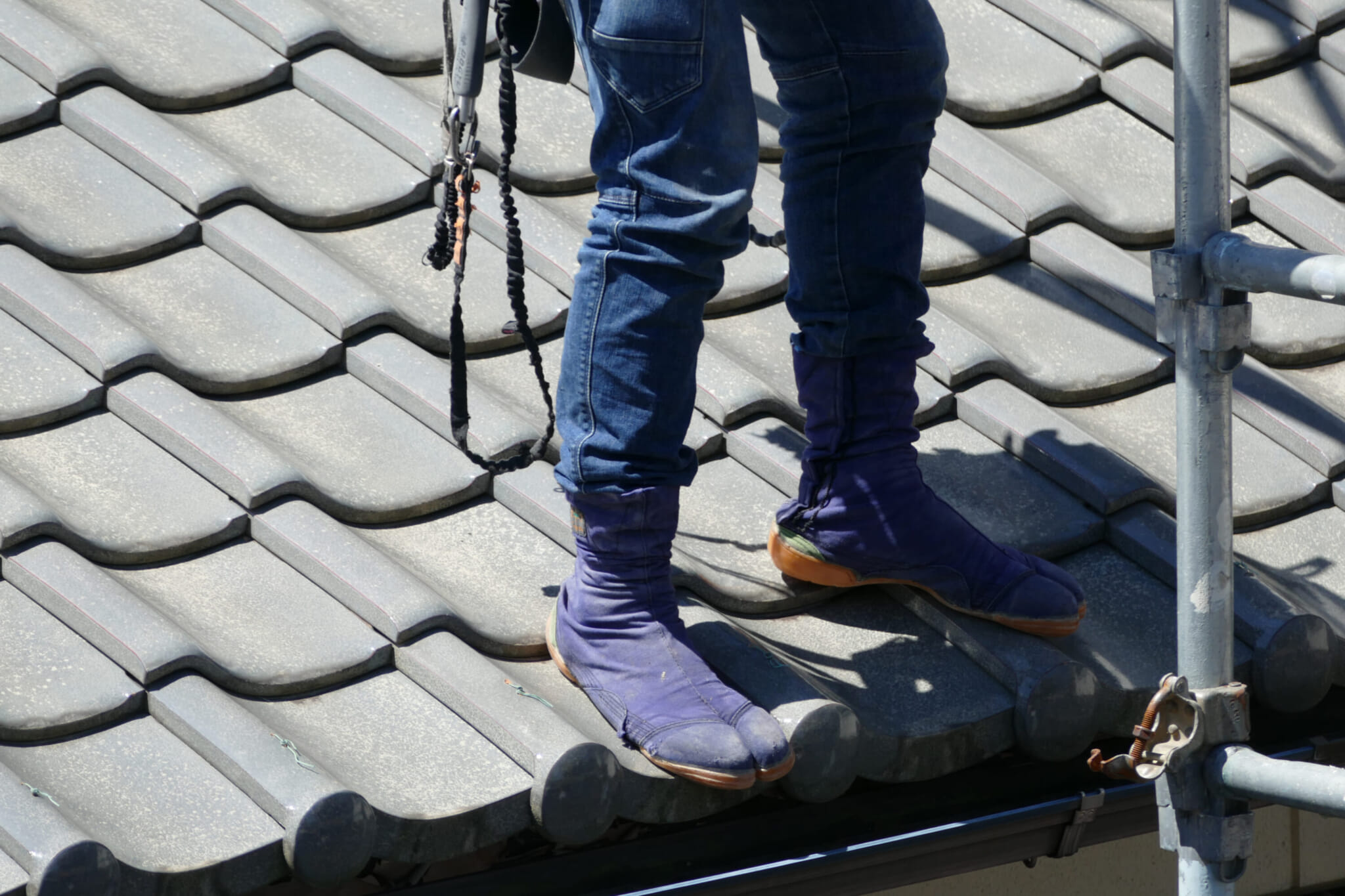
Jika-tabi
The combination of a flat sole and the split toe design gives the jika-tabi both the protective qualities of a soled shoe and the physical agility and grounding of a bare foot. This ethos has fuelled the trend for very thin-soled minimal footwear that has been popular among runners and outdoor enthusiasts since it was catalyzed in 2009 by Christopher McDougall’s book, Born to Run. Plenty of running shoes in the following years have become lighter and thinner, but Nike took direct inspiration from the split-toe jika-tabi design for its performance running shoes, Air Rifts, which first launched in 1996 and have maintained a cult following.
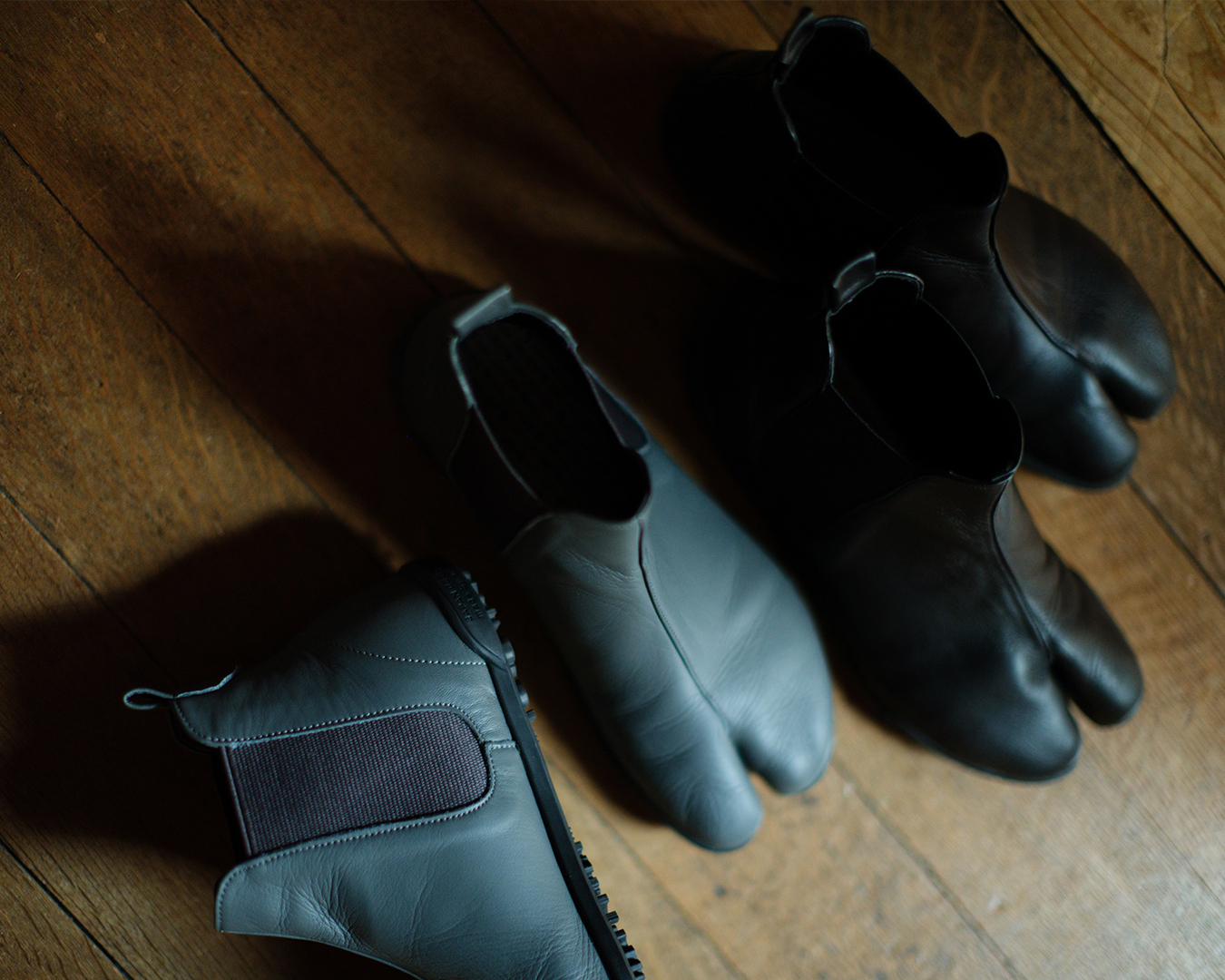
Shoes from Sou-Sou
Tabi Today
The jika-tabi continues to evolve as both a practical and fashionable shoe. Maison Margiela initially stuck with the tabi design season after season because there was no budget for another form. Now, the style is so popular the extensive range includes Mary Janes, heeled ankle boots, knee-highs, pumps, lace-ups, sneakers, loafers, ballet flats, rubber boots, Chelsea boots and even western-style boots and flip flops. The shoes come with a hefty price tag; sneakers are ¥90,200, classic black Mary Jane Tabis start at ¥151,800, while sparkling rhinestone lace-ups are an eye-watering ¥528,000.
But those who want to wear authentically Japanese jika-tabi at a fraction of the cost can look closer to home. Kyoto-based shoemaker, Kikkabo produces both off-the-rack and made-to-measure cowhide and pigskin tabi and other traditional shoes, such as asagutsu Shinto priest shoes from around ¥50,000. The owner, Kousuke Nojima, also runs shoemaking workshops underpinned by a Zen philosophy of no waste.
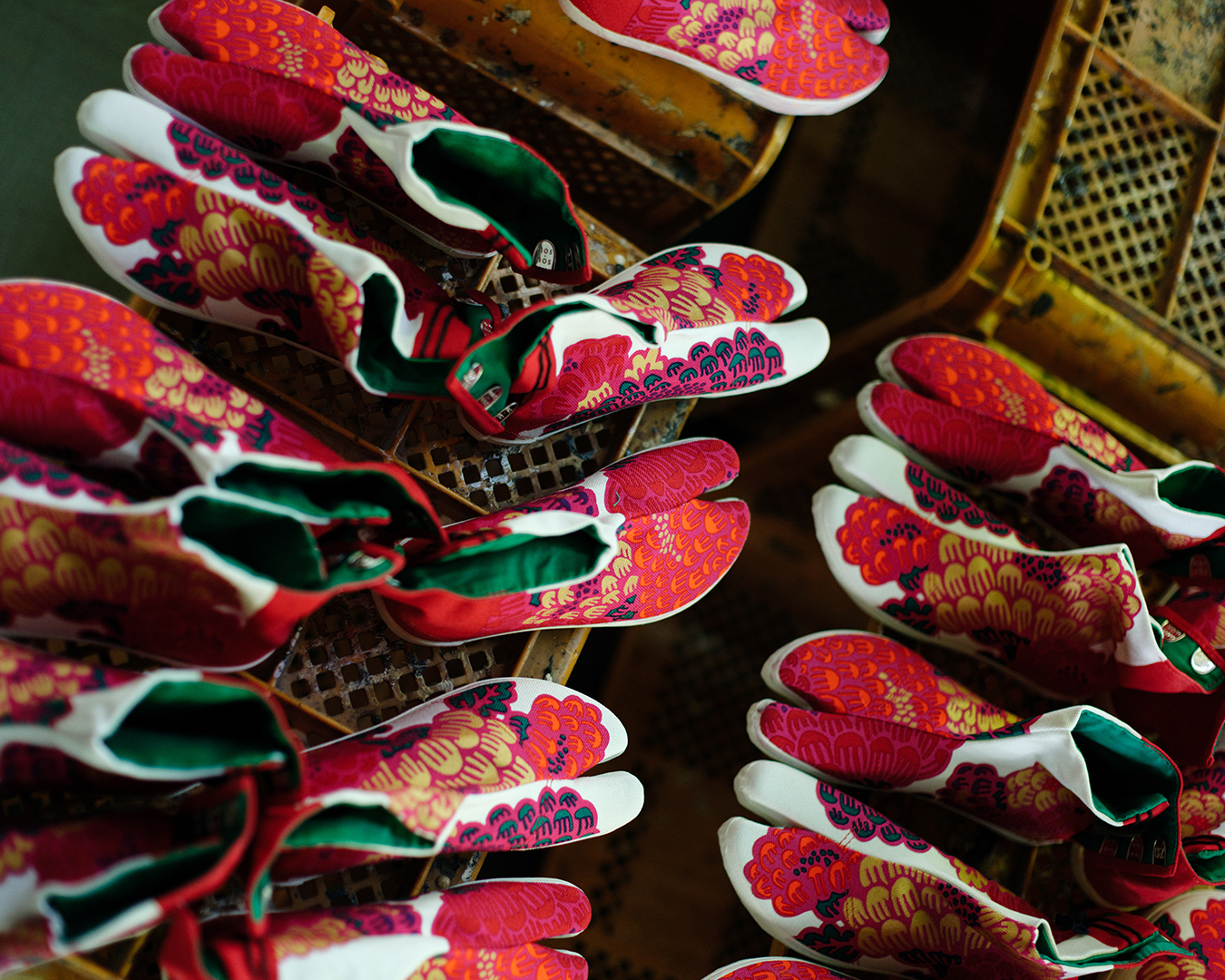
Shoes from Sou-Sou
Alternatively, Sou-Sou (stylized as SOU – SOU), a concept store that offers a modern take on traditional Japanese clothing, accessories and gifts, makes and sells various jika-tabi styles. Expect to pay around ¥10,000 for colorful jika-tabi boots in fun designs — think Mount Fuji prints, vibrant patterns and limited edition styles. You can also shop for tabi flip-flops, sneakers and slippers either in its Kyoto and Tokyo stores, or online.

